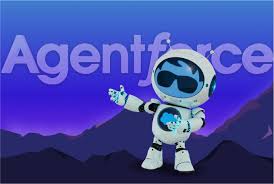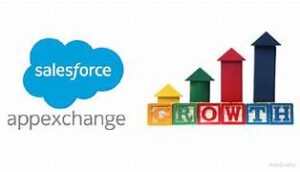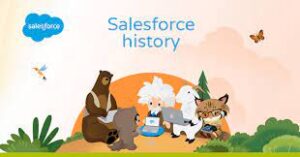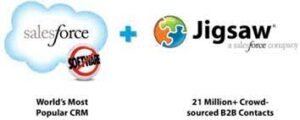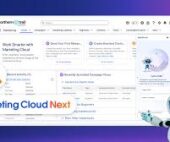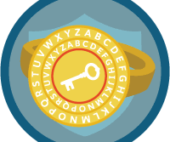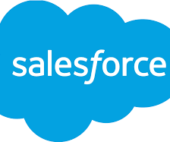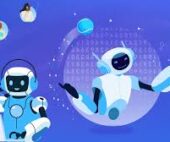Autonomous, proactive AI agents form the core of Agentforce. But how do they operate? A closer look reveals the sophisticated mechanisms driving their functionality.
The rapid pace of AI innovation—particularly in generative AI—continues unabated. With today’s technical advancements, the industry is swiftly transitioning from assistive conversational automation to role-based automation that enhances workforce capabilities. For artificial intelligence (AI) to achieve human-level performance, it must replicate what makes humans effective: agency. Humans process data, evaluate potential actions, and execute decisions. Equipping AI with similar agency demands exceptional intelligence and decision-making capabilities.
Salesforce has leveraged cutting-edge developments in large language models (LLMs) and reasoning techniques to introduce Agentforce—a suite of ready-to-use AI agents designed for specialized tasks, along with tools for customization. These autonomous agents can think, reason, plan, and orchestrate with remarkable sophistication, marking a significant leap in AI automation for customer service, sales, marketing, commerce, and beyond.
Agentforce: A Breakthrough in AI Reasoning
Agentforce represents the first enterprise-grade conversational automation solution capable of proactive, intelligent decision-making at scale with minimal human intervention. Several key innovations enable this capability:
- ReAct-Based Orchestration vs. Chain-of-Thought (CoT):
Extensive testing demonstrated that Reasoning and Acting (ReAct)-style prompting outperforms traditional CoT techniques. In the ReAct framework, the system cycles through reason, act, and observe until the user’s goal is achieved. This iterative approach allows the system to incorporate new information, ask clarifying questions, and refine responses for precision—resulting in a more natural and fluid conversational experience. - Topic Classification:
A novel topic-based system maps user intents to specific tasks. Each topic contains relevant instructions, business policies, and actions needed to fulfill a request. This structure defines the task’s scope and solution space, enabling seamless scalability. Natural language instructions embedded within topics guide the LLM, ensuring compliance with business rules (e.g., “free returns up to 30 days”). This approach allows agents to safely manage thousands of actions. - LLM-Generated Responses:
Earlier systems were restricted to predefined action outputs, limiting conversational flexibility. By enabling LLMs to generate responses based on conversation history, Agentforce delivers richer interactions. Users can now ask follow-up questions or seek clarifications, significantly improving goal fulfillment. - Transparent Reasoning:
Prompting LLMs to explain their reasoning before taking action drastically reduces hallucinations. This transparency allows administrators to fine-tune agent behavior while building user trust. In the Agent Builder canvas, reasoning is displayed by default, and users can request further explanations from the agent.
Additional Differentiators of Agentforce
Beyond the Atlas Reasoning Engine, Agentforce boasts several distinguishing features:
- Proactive Automation:
Agents aren’t limited to user-initiated triggers—they can also respond to CRM updates, business processes, or real-time events (e.g., a case status change, an incoming email, or an upcoming meeting). This proactiveness extends their utility across front- and back-office operations. - Dynamic Information Retrieval:
Unlike static grounding methods, Agentforce taps into real-time data through:- Retrieval-Augmented Generation (RAG): Semantic search across structured/unstructured Data Cloud sources.
- Web Search & Knowledge Q&A: Researching external data (e.g., company profiles) and combining it with internal policies to execute tasks (e.g., drafting an email summary).
- Flow, API, and Apex Integration: Passing contextual workflow data directly to agents, eliminating custom scenario handling.
- Seamless Human Handoff:
While AI’s nondeterministic nature necessitates safeguards (via the Einstein Trust Layer), critical scenarios may require human intervention. Agentforce treats “transfer to human” as a native action, ensuring smooth escalations when needed.
The Future of Agentforce
Though still in its early stages, Agentforce is already transforming businesses for customers like Wiley and Saks Fifth Avenue. Upcoming innovations include:
- Testing & Evaluation Framework:
A proprietary system to validate agent performance on accuracy, latency, cost, and trust—tailored specifically for CRM use cases. - Multi-Intent Support:
Enabling agents to handle complex, multi-goal requests (e.g., “Update my order and find me a shirt in size M”). - Multimodal AI:
Expanding beyond text to voice (e.g., AI-powered IVR, employee coaching) and vision (e.g., product search, field service troubleshooting). - Multi-Agent Collaboration:
Specialized agents working in tandem—such as a sales development rep agent nurturing leads while a sales coach agent advises on negotiations—to streamline workflows.
The Third Wave of AI
Agentforce heralds the third wave of AI, surpassing predictive AI and copilots. These agents don’t just react—they anticipate, plan, and reason autonomously, automating entire workflows while ensuring seamless human collaboration. Powered by the Atlas Reasoning Engine, they can be deployed in clicks to revolutionize any business function.
The era of autonomous AI agents is here. Are you ready?


